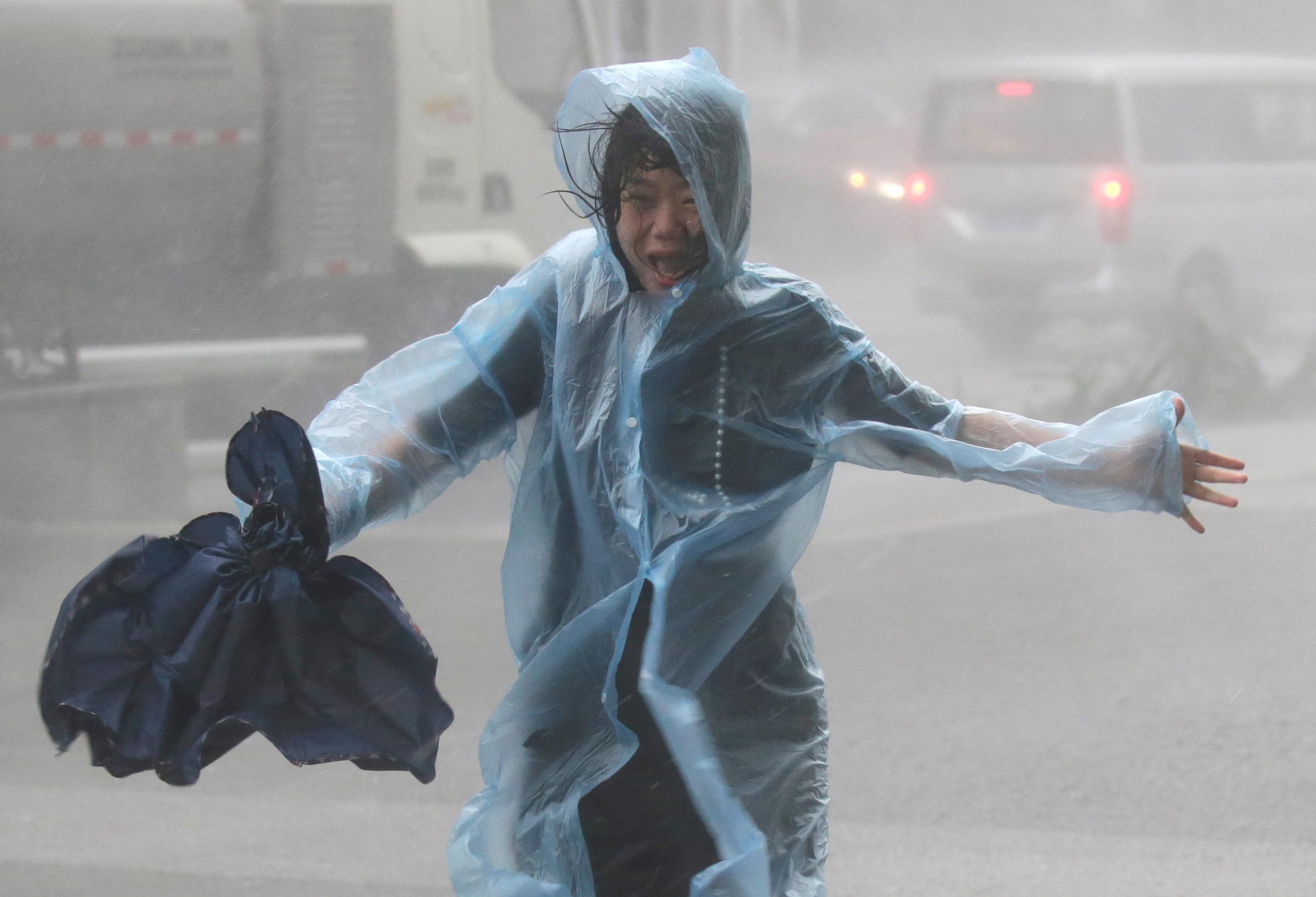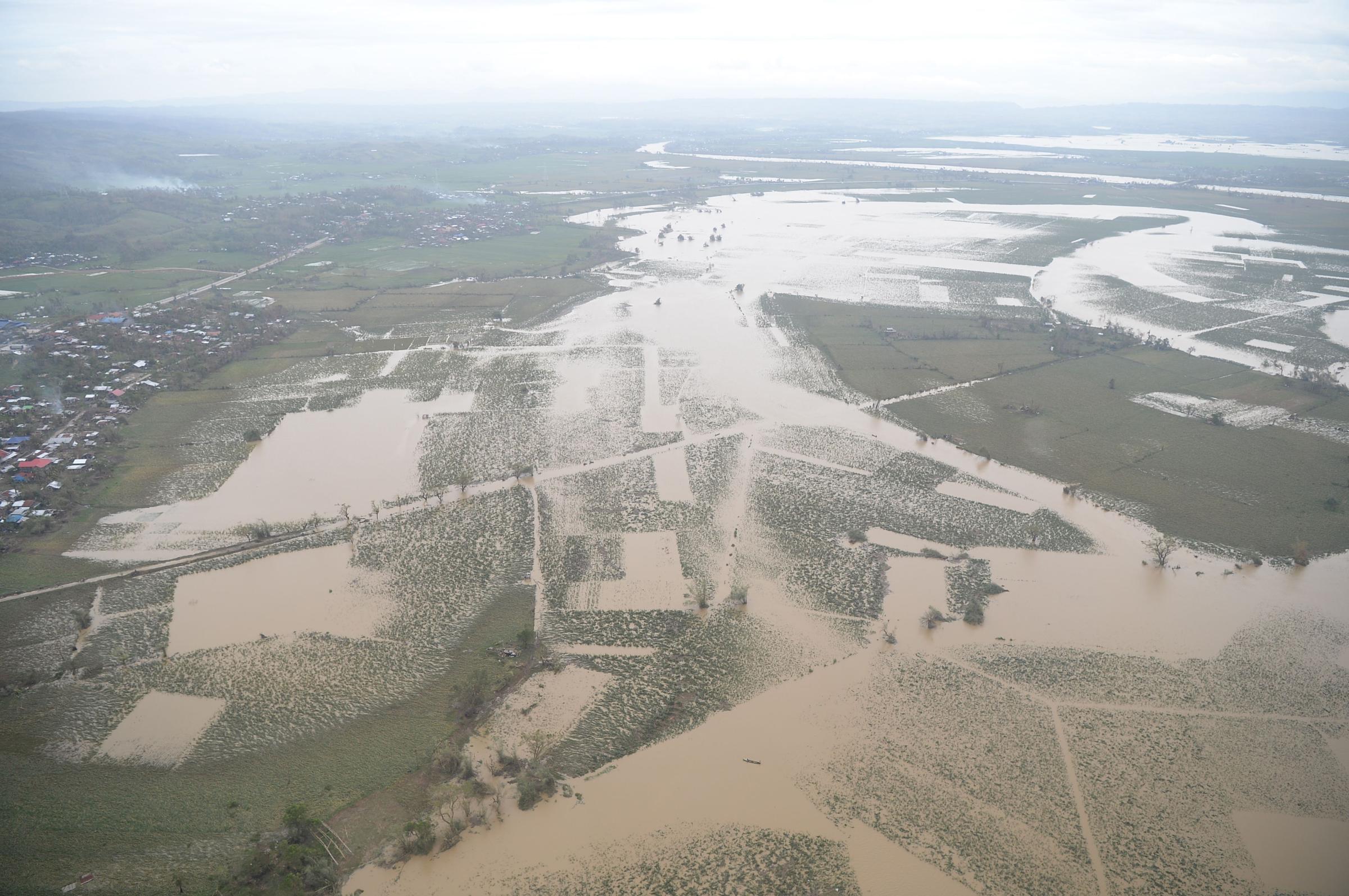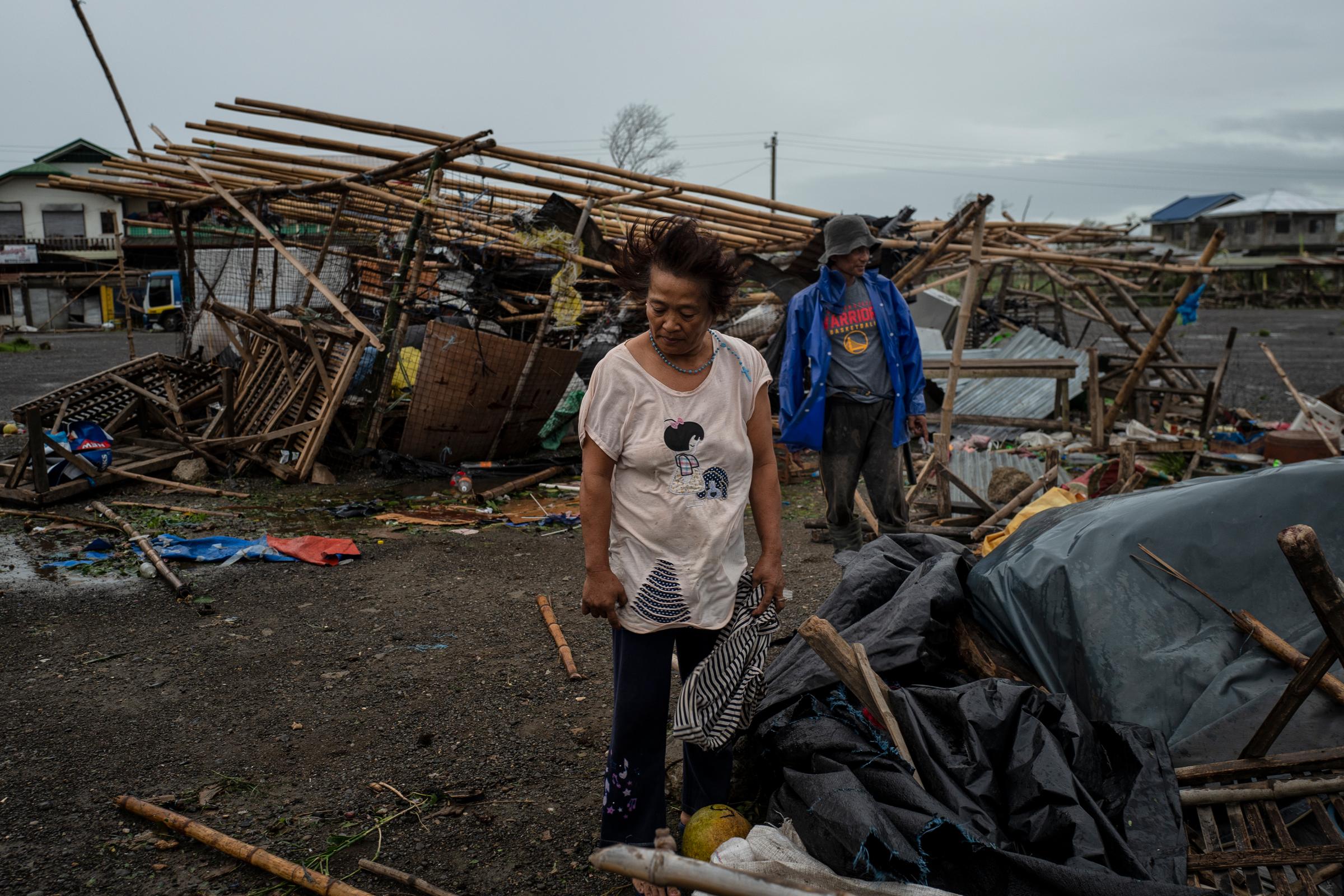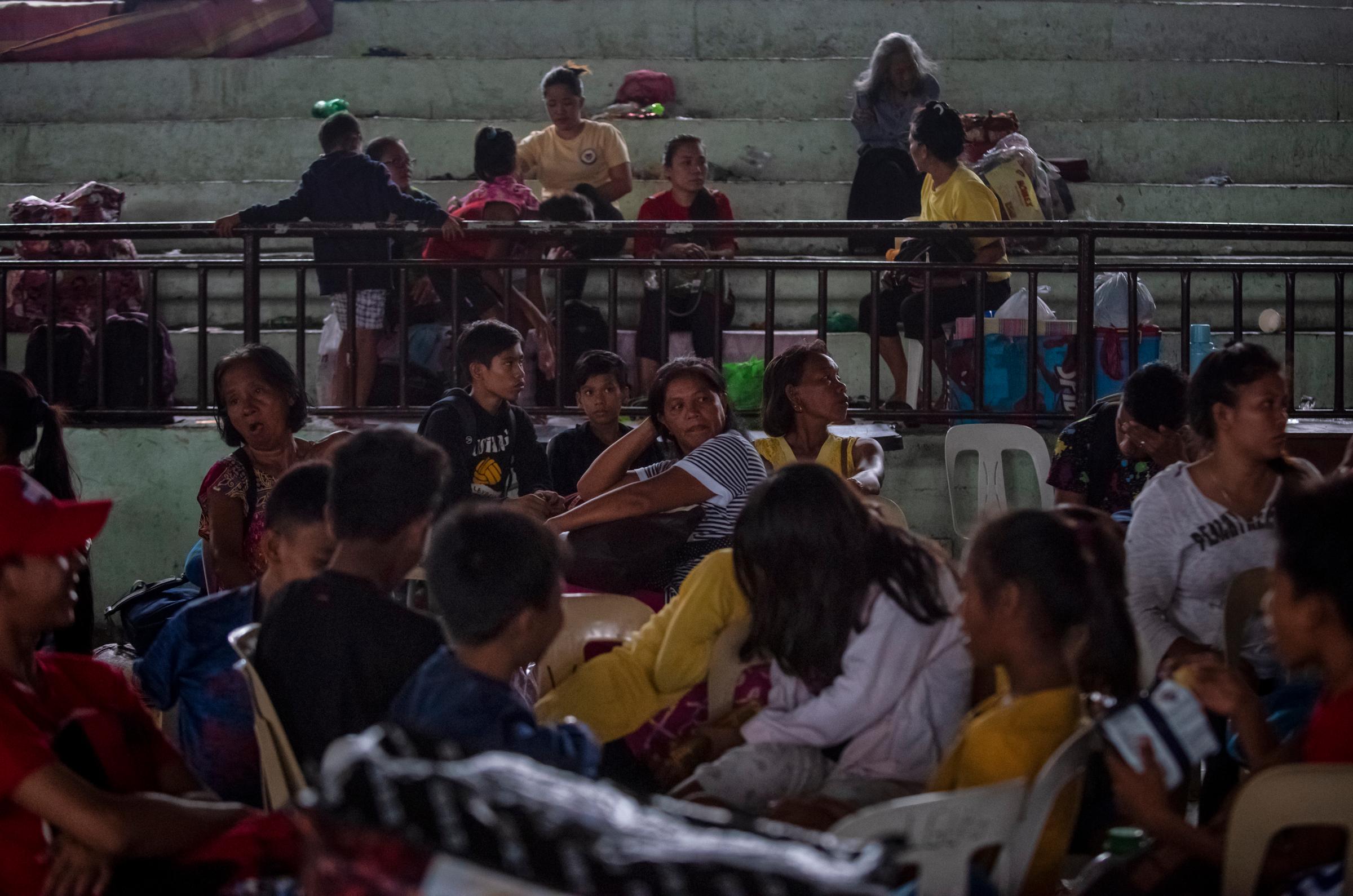The biggest storm of the year lashed the southern coast of China Sunday, whipping the seas and shuttering cities throughout a two-day trail of destruction that claimed dozens of lives in the northern Philippines and sideswiped the semiautonomous region of Hong Kong.
The 550-mile wide Typhoon Mangkhut, a name that means mangosteen fruit in Thai language, made landfall in the city of Zanjiang in China’s Guangdong province just after 5 p.m. local time with winds around 100 miles per hour, roughly the strength of a Category 2 hurricane on the Saffir-Simpson scale. It hit the Philippines with the force of a Category 5.
Read more: Typhoon Mangkhut Barrels Toward China After Lashing the Northern Philippines
In Hong Kong, tape stretched hurriedly across windows was no match for ferocious winds that slammed against the city’s skyscrapers and burst through glass doors in hotel lobbies. The densely populated city turned into a ghost town as residents shut themselves indoors after emptying the shelves of supermarkets.
Rooftops were torn off some low-lying buildings as the strongest storm to hit the territory in six decades brushed past. A viral video appeared to show the side of a high-rise coming loose and tumbling to the ground. Storm surges were filmed crashing at the feet of skyscrapers and flinging debris through otherwise emptied streets.

The damage in China is still unclear, but more than two million people have reportedly been evacuated from the port city and surrounding areas in Mangkhut’s path. The storm weakened considerably after its powerful assault on the Philippines’ island of Luzon, where at least 65 have died and more than 150,000 were displaced.





Most of the fatalities were caused by landslides and collapsed buildings. The Cagayan Valley, an agricultural area where villagers mostly grow rice and corn, has been devastated by floodwaters and winds reducing homes and shops to rubble. Felled trees, power cuts and damaged roads have delayed assistance to some of the poor and remote areas hardest hit.
The Philippines is no stranger to dangerous Pacific storms. In 2013, Super Typhoon Haiyan devastated the country when it tore straight through its center and claimed more than 6,300 lives.
More Must-Reads from TIME
- Cybersecurity Experts Are Sounding the Alarm on DOGE
- Meet the 2025 Women of the Year
- The Harsh Truth About Disability Inclusion
- Why Do More Young Adults Have Cancer?
- Colman Domingo Leads With Radical Love
- How to Get Better at Doing Things Alone
- Michelle Zauner Stares Down the Darkness
Write to Eli Meixler at eli.meixler@time.com